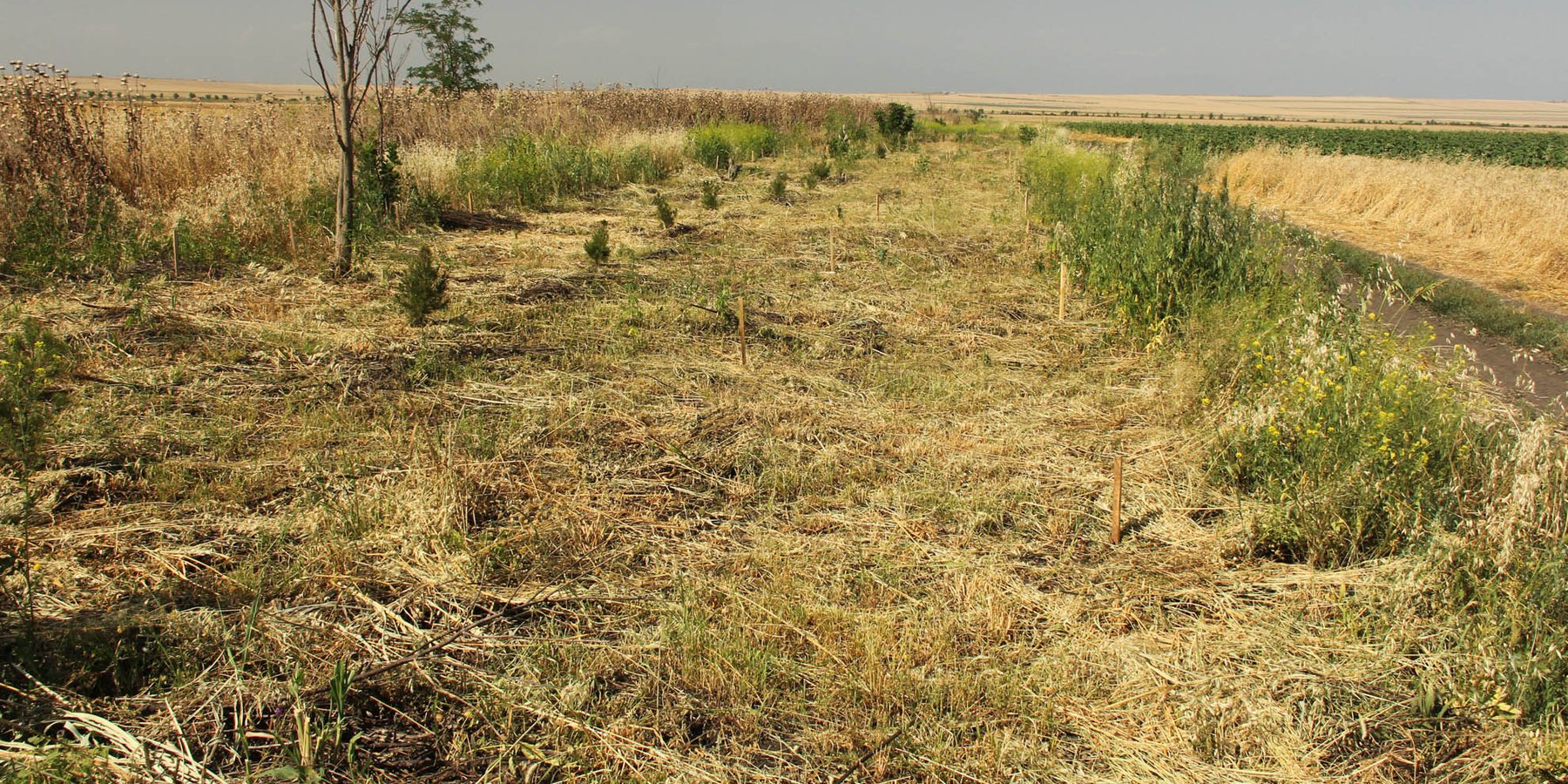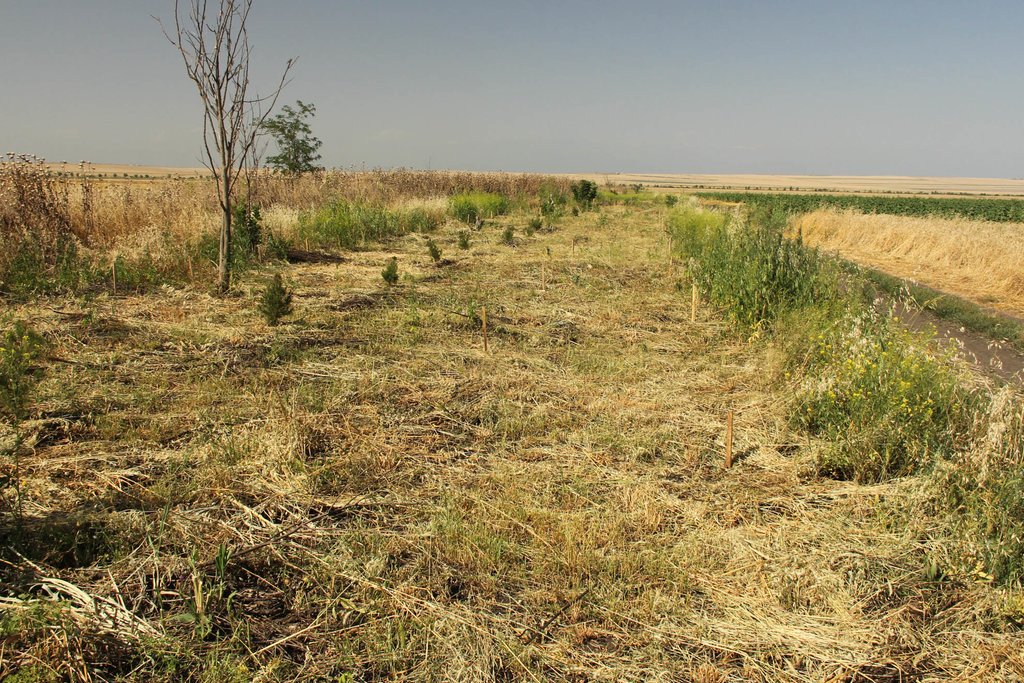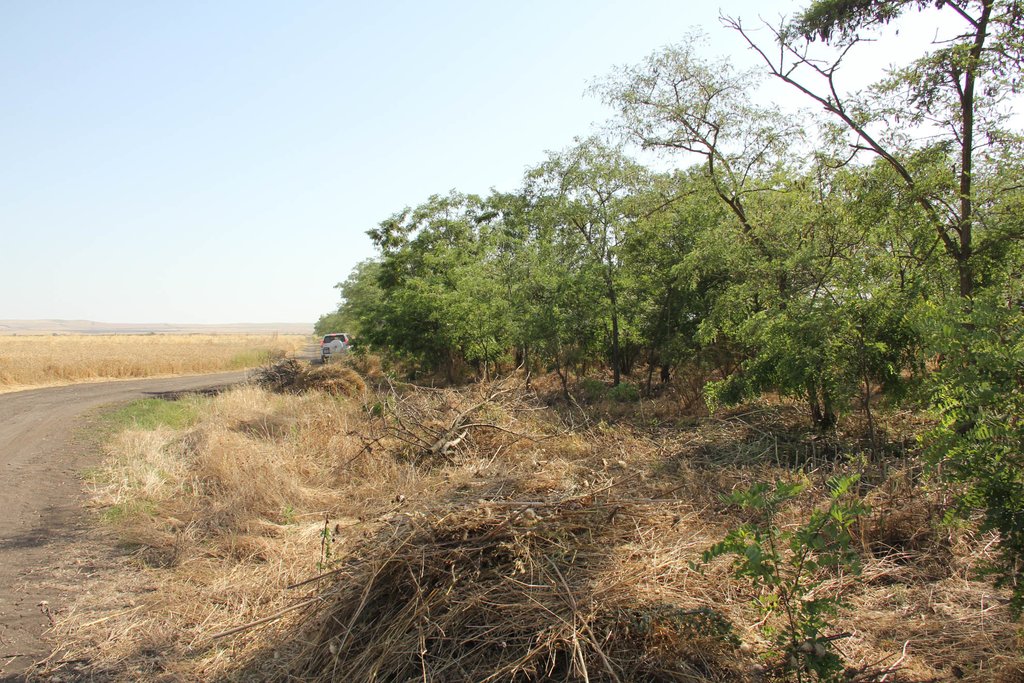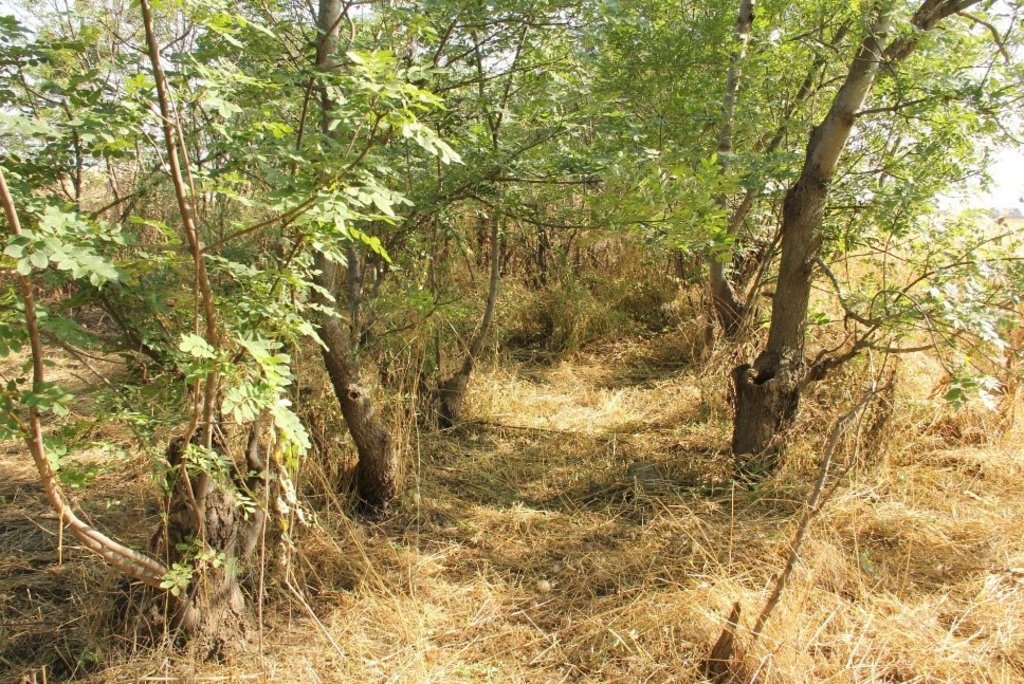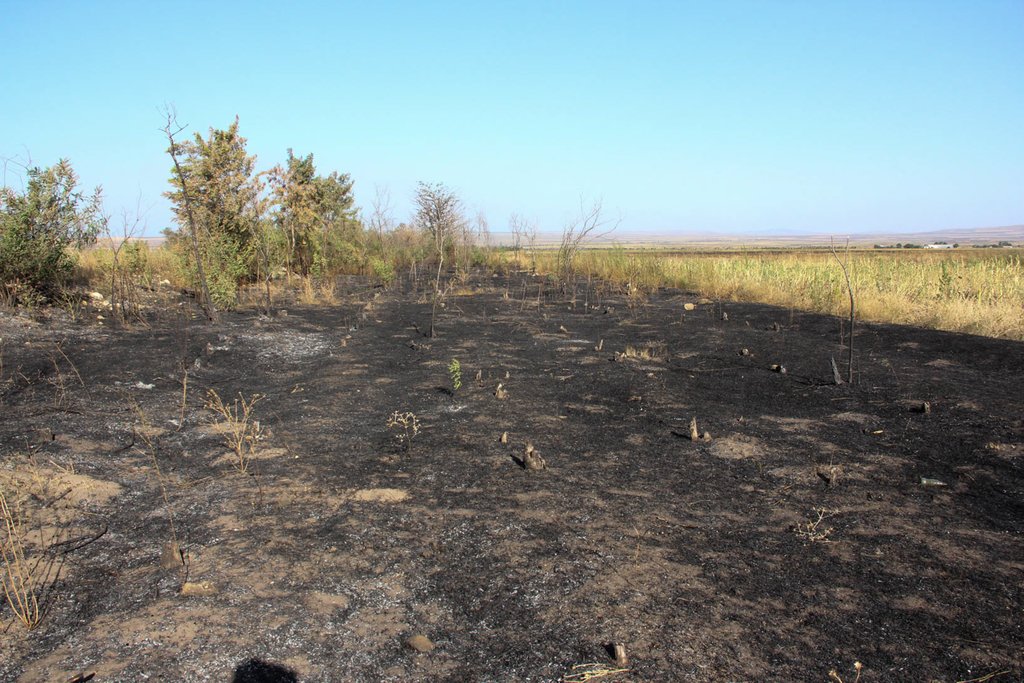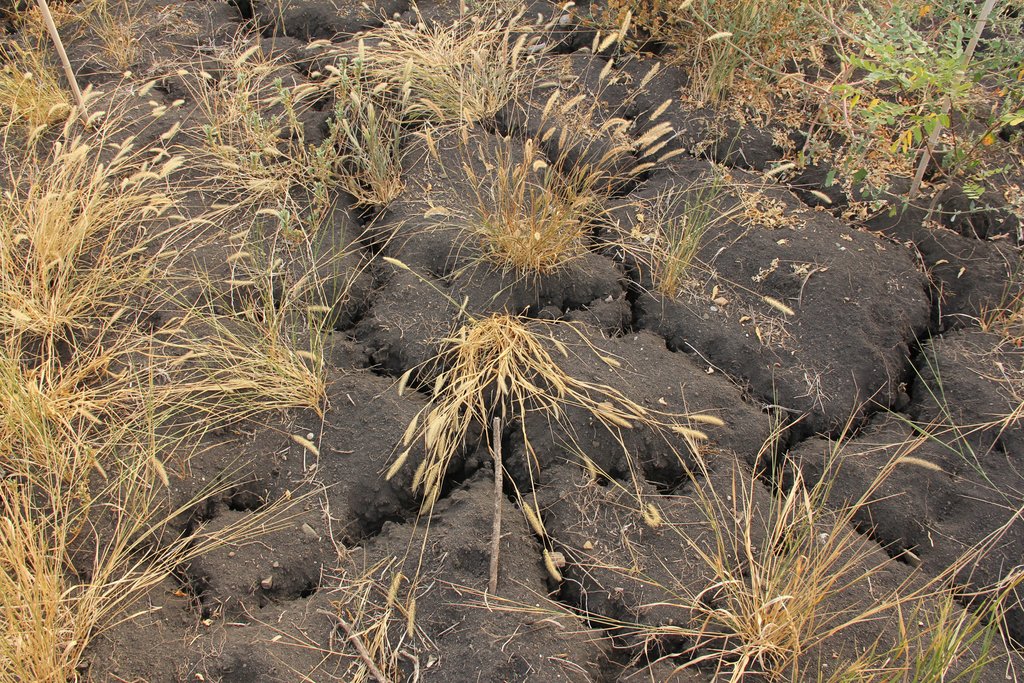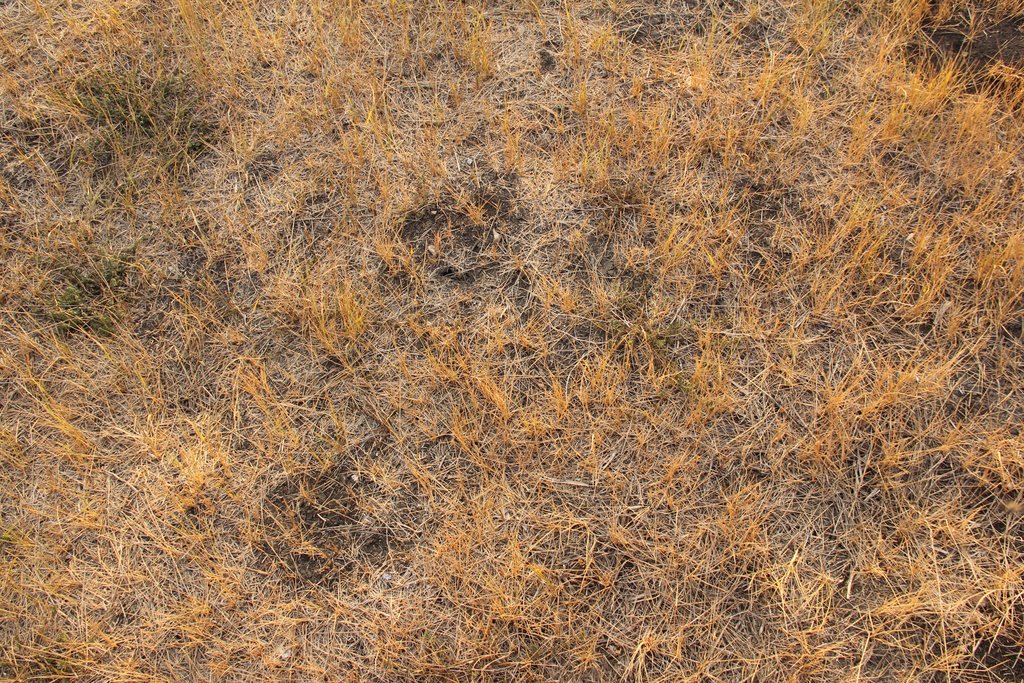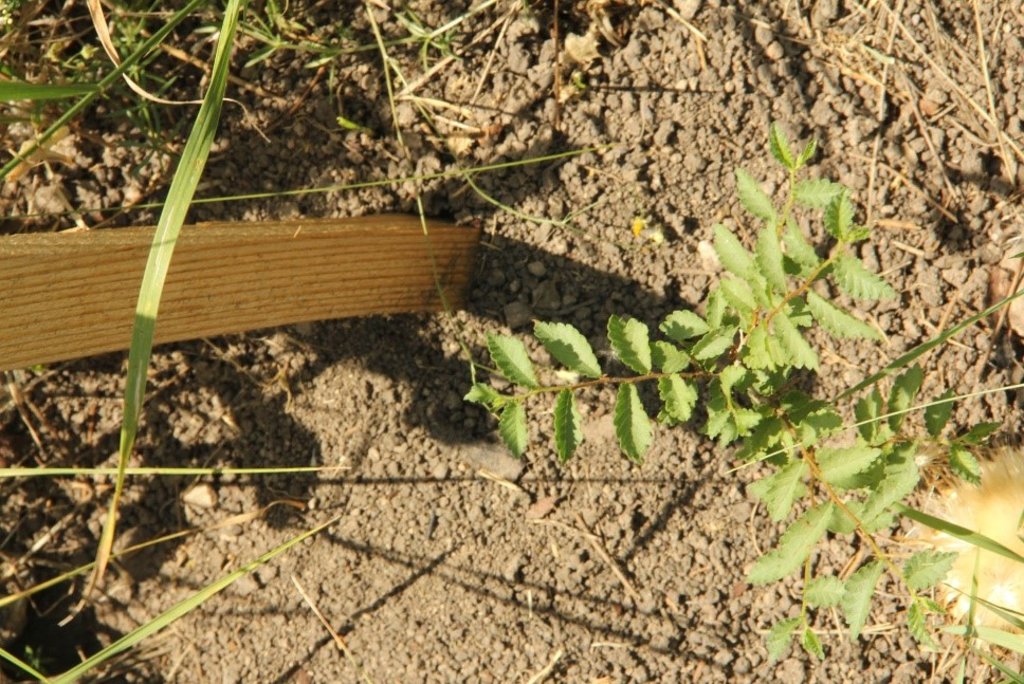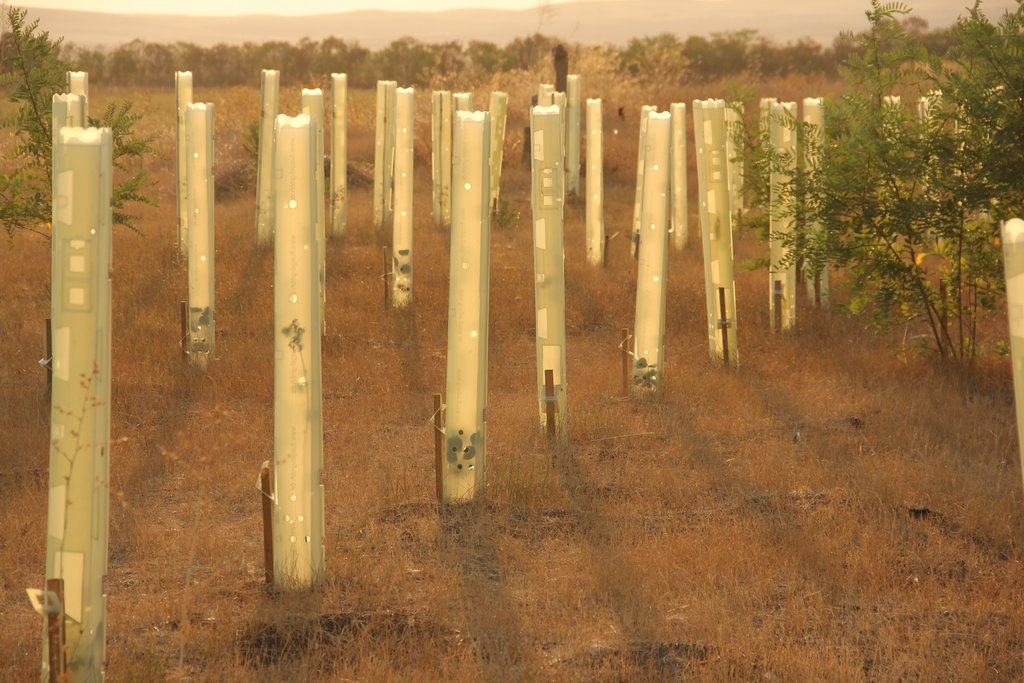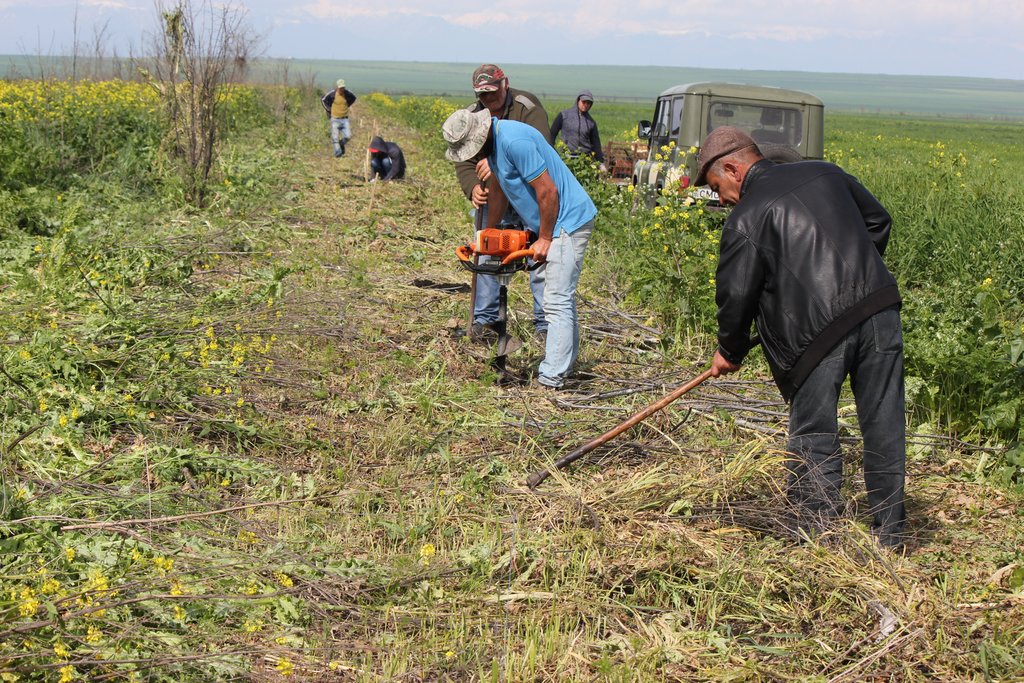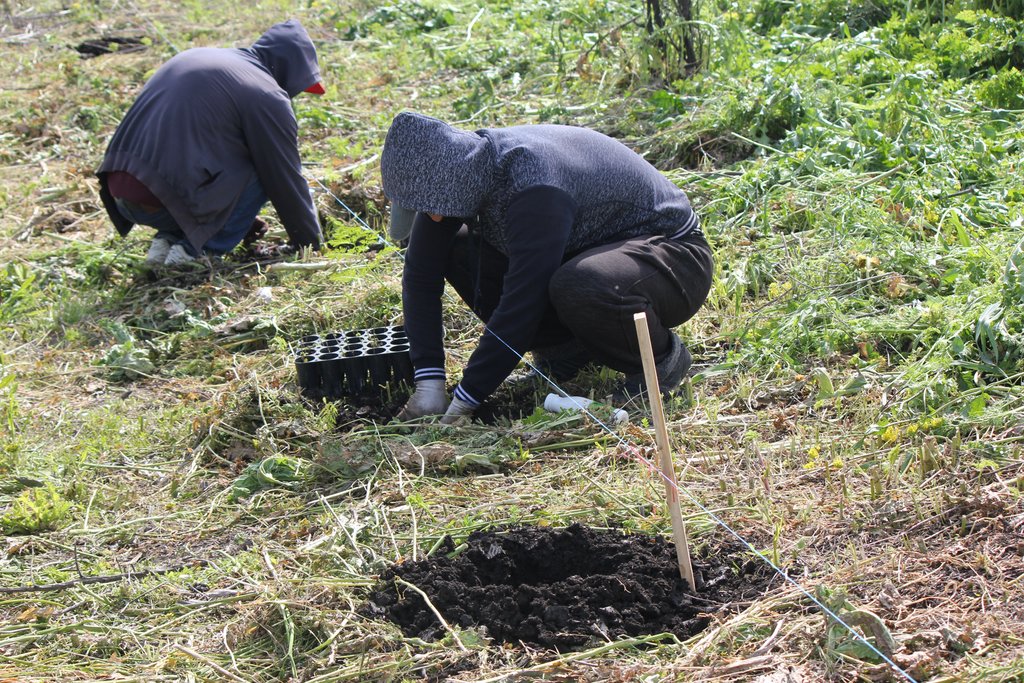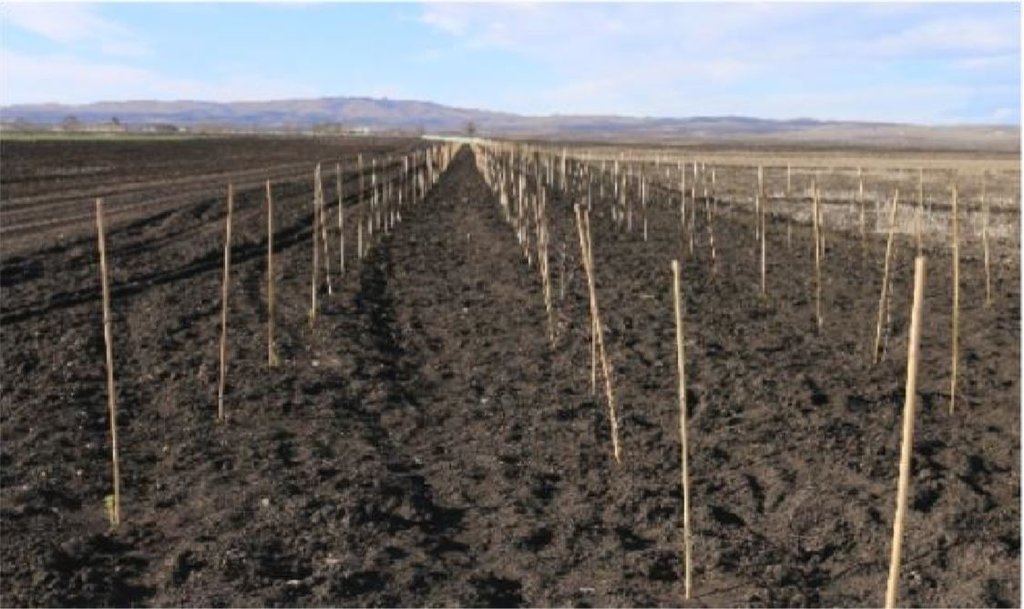Rehabilitation of Windbreaks [Géorgie]
- Création :
- Mise à jour :
- Compilateur : Hanns Kirchmeir
- Rédacteur : Kety Tsereteli
- Examinateur : Rima Mekdaschi Studer
technologies_4274 - Géorgie
Voir les sections
Développer tout Réduire tout1. Informations générales
1.2 Coordonnées des personnes-ressources et des institutions impliquées dans l'évaluation et la documentation de la Technologie
co-compiler:
co-compiler:
co-compiler:
Nom du projet qui a facilité la documentation/ l'évaluation de la Technologie (si pertinent)
Applying Landscape and Sustainable Land Management (L-SLM) for mitigating land degradation and contributing to poverty reduction in rural area (L-SLM Project)Nom du ou des institutions qui ont facilité la documentation/ l'évaluation de la Technologie (si pertinent)
Regional Environmental Centre for the Caucasus (REC Caucasus) - GéorgieNom du ou des institutions qui ont facilité la documentation/ l'évaluation de la Technologie (si pertinent)
Deutsche Gesellschaft für Internationale Zusammenarbeit (GIZ)1.3 Conditions relatives à l'utilisation par WOCAT des données documentées
Le compilateur et la(les) personne(s) ressource(s) acceptent les conditions relatives à l'utilisation par WOCAT des données documentées:
Oui
1.4 Déclaration sur la durabilité de la Technologie décrite
Est-ce que la Technologie décrite ici pose problème par rapport à la dégradation des terres, de telle sorte qu'elle ne peut pas être déclarée comme étant une technologie de gestion durable des terres?
Non
2. Description de la Technologie de GDT
2.1 Courte description de la Technologie
Définition de la Technologie:
Windbreaks are an integrated technology to increase land productivity and biodiversity at different levels. Along six kilometres, located between a road and agricultural fields, windbreaks were rehabilitated or newly established to protect the soil wind erosion. Four lines of seedlings including seven tree species were planted in two meters distance to each other. The survival rates of different tree species have been accessed and evaluated.
2.2 Description détaillée de la Technologie
Description:
Agriculture plays a key role in the economy of Georgia. 74% of wheat is produced in Kakheti. Within the region, the main wheat-growing area is Shiraki valley located in Dedoplistskaro Municipality in Eastern Georgia. The valley has deep soil with high humus content offering significant potential for high agricultural yields. Among others, wind erosion and increase of evaporation due to degradation of windbreaks have led to reduced agricultural yields. At the end of the Soviet Union, there were 1.800 km of tree windbreaks in Shiraki. More than 90% of them were destroyed either by fire or illegal cuttings for firewood. Fires are caused by farmers burning harvest residues and by shepherds burning pastures and windbreaks to facilitate the growth of new grass and clear land. Today, fire still pose the greatest threat to the rehabilitation of windbreaks. Grazing by migrating sheep and by local (cattle) herds as well as firewood extraction is still causing additional damage to windbreaks in specific areas of Shiraki valley.
In Dedoplistskaro, the SLM-pilot activities focus on the establishment of a windbreak/agroforestry system to reduce wind erosion, which is here the main degradation factor and threatens agricultural production. Windbreaks are a well-known measure against wind erosion. They consist of several rows of trees and bushes on the edges of agricultural fields to reduce the wind-speed on the surface level. Slowing down of wind-speed protects the topsoil from wind erosion. Windbreaks improve the micro-climate for crops growing in their shelter by reducing moisture loss. Windbreaks also provide shelter and habitats for a wide range of plants, pollinating insects, wildlife and birds, including predators of agricultural pests.
Selection of seedlings:
Tree species well adapted to the regional conditions (climate, soil, etc.) were selected such as Pinus (Pinus eldarica, survival rate: 90%), Pistacia (Pistacia mutica, survival rate 60%) and Elm (Ulmus minor, survival rate 60%), Wild Almond (Prunus argentea, survival rate 40%), Persian olive (Eleagnus angustifolia, survival rate: 40%) and Robinia (Robinia pseudoacacia, survival rate 16%). The survival rates are based on the assessment in September 2018, 6 months after planting.
The seeds were prepared for planting in a nursery. Seedlings to be transported over long distances must be grown in special containers to ensure good root system development and minimise damage during transport. If they are grown near the planting site and the transport time is short, seedlings may also be bare-rooted.
Preparation of soil and planting:
The pilot site of the project "Applying Landscape and Sustainable Land Management (L-SLM) for Mitigating Land Degradation and Contributing to Poverty Reduction in Rural Areas", implemented by the Regional Environment Centre for the Caucasus, is six km long and located on the main road on state-owned land. Before planting the seedlings, the vegetation (grass and herbs) was cut and removed. No ploughing was done. During the implementation in 2018, the design of the site was changed to a 6 km long U-shaped form with three 10 m wide segments of windbreaks. The total area of the pilot site is 6 ha, but since there were already intact hedges in some parts, the total area where windbreaks were either newly planted or rehabilitated is 3 ha. Each windbreak consisted of four lines of tree seedlings of different species in two meters distance to each other (inter-row spacing) and 2 m distance between the seedlings within a row (intra-row spacing). First, holes were dug (30 cm diameter, 40 cm deep), then water accumulation granulate was added to keep the water better, then the seedlings of 10-40 cm height and 2-3 years old depending on species were inserted. No compost or fertiliser was used. The seedlings were protected by plastic tubes from the cold and dry winter season. Every 2nd seedling was marked with a wooden pole to distinguish them from weeds and to control the survival rate. If the survival rate falls below 50%, the trees should be replaced. After the planting of the seedling, the herbs and grass were cut again. Further cuttings took place several times to avoid shading and competition.
Maintenance
Besides cutting of weeds for 2 times in the main growing season (Mai-July) regular watering was applied. Young seedlings should be watered 2-4 times per year (first 2 years) – about 15-20l per tree. After 2 years the root system should be established in such a way that it can take care of itself. The implementation area was not fenced, but there is no pastureland around and pressure by browsing is low.
The Regional Environment Centre for the Caucasus (REC) in cooperation with GIZ has conducted a cost-benefit analysis to estimate the value of protecting remaining windbreaks, the economic impact of banning crop residue burning and the benefits of straw as a fertilizer. The survey data shows that a ban on crop residue burning will help to protect the existing windbreaks. Consequently, shredding of straw during the harvest and subsequent incorporation of straw into the soil builds up soil organic matter and helps to retain the moisture in the ground. Unclear ownership and institutional responsibility are the most relevant constraints for sustainable windbreaks management as a measure. At the political level, issues were noted, and steps were taken: A working group under the National Forest Programme selected windbreaks restoration and protection as their key topics. The Ministry of Environmental Protection and Agriculture with the support from REC and GIZ developed a policy for rehabilitation and protection of windbreaks. Based on this, a new law on windbreaks was initiated which will clarify the situation by ascribing clear responsibilities on windbreak maintenance and management. This law is still at the stage of preparation in the Agrarian Committee.
2.3 Photos de la Technologie
2.5 Pays/ région/ lieux où la Technologie a été appliquée et qui sont couverts par cette évaluation
Pays:
Géorgie
Région/ Etat/ Province:
Kakheti
Autres spécifications du lieu:
Dedoplistskaro
Spécifiez la diffusion de la Technologie:
- appliquée en des points spécifiques ou concentrée sur une petite surface
Est-ce que les sites dans lesquels la Technologie est appliquée sont situés dans des zones protégées en permanence?
Non
Commentaires:
The intervention was done along the main road and along two side roads heading south.
Map
×2.6 Date de mise en œuvre de la Technologie
Indiquez l'année de mise en œuvre:
2018
2.7 Introduction de la Technologie
Spécifiez comment la Technologie a été introduite: :
- par le biais de projets/ d'interventions extérieures
Commentaires (type de projet, etc.) :
The rehabilitation of the windbreaks was tested on a pilot site along a highly visible road within the project "Applying Landscape and Sustainable Land Management (L-SLM) for Mitigating Land Degradation and Contributing to Poverty Reduction in Rural Areas" implemented by the Regional Environment Centre for the Caucasus (REC).
3. Classification de la Technologie de GDT
3.1 Principal(aux) objectif(s) de la Technologie
- améliorer la production
- réduire, prévenir, restaurer les terres dégradées
- conserver/ améliorer la biodiversité
3.2 Type(s) actuel(s) d'utilisation des terres, là où la Technologie est appliquée
Les divers types d'utilisation des terres au sein du même unité de terrain: :
Oui
Précisez l'utilisation mixte des terres (cultures/ pâturages/ arbres):
- Agroforesterie

Terres cultivées
- Cultures annuelles
Cultures annuelles - Précisez les cultures:
- céréales - orge
- céréales - blé de printemps
- céréales - blé d'hiver
Nombre de période de croissance par an: :
- 2
Est-ce que les cultures intercalaires sont pratiquées?
Non
Est-ce que la rotation des cultures est appliquée?
Non

Forêts/ bois
- Plantations d'arbres, boisements
Plantation d'arbres, afforestation: Précisez l'origine et la composition des espèces. :
- Variétés mixtes
Type de plantation d'arbres, d'afforestation:
- plantations des zones de steppe tempérées
Type d’arbres:
- Espèces de Pinus (pin)
- Ulmus minor, Pinus eldarica, Elaeagnus angustifolia, Cotinus coggygria , Pistacia mutica, Ulmus minor, Robinia pseudoacacia, Prunus argentea
Est-ce que les espèces d’arbres précisées ci-dessus sont des espèces d'arbre arbres à feuilles caduques ou à feuilles persistantes ?
- forêt mixte décidue/ à feuillage persistant
Produits et services:
- Bois de chauffage
- Conservation/ protection de la nature
- Protection contre les aléas naturels
- Protection soil from wind erosion
Commentaires:
When the windbreak is established and dense, selective logging of firewood is possible.
3.3 Est-ce que l’utilisation des terres a changé en raison de la mise en œuvre de la Technologie ?
Est-ce que l’utilisation des terres a changé en raison de la mise en œuvre de la Technologie ?
- Non (Passez à la question 3.4)
3.4 Approvisionnement en eau
Approvisionnement en eau des terres sur lesquelles est appliquée la Technologie:
- pluvial
Commentaires:
The crop-fields are not irrigated. Only the young seedlings of the rehabilitated windbreak are irrigated 2-4 times a year in the first 2-3 years.
3.5 Groupe de GDT auquel appartient la Technologie
- agroforesterie
- brise-vent/ plantations abris
3.6 Mesures de GDT constituant la Technologie

pratiques végétales
- V1: Couverture d’arbres et d’arbustes
3.7 Principaux types de dégradation des terres traités par la Technologie

érosion éolienne des sols
- Et: perte de la couche superficielle des sols (couche arable)

dégradation hydrique
- Ha: aridification
Commentaires:
In addition to the loss of topsoil, the reduction of wind speed and the degree of vegetation reduce the evapotranspiration rate of the crop and thereby the amount of water.
3.8 Prévention, réduction de la dégradation ou réhabilitation des terres dégradées
Spécifiez l'objectif de la Technologie au regard de la dégradation des terres:
- réduire la dégradation des terres
Commentaires:
The windbreak will reduce soil erosion caused by wind on neighbouring crop fields.
4. Spécifications techniques, activités, intrants et coûts de mise en œuvre
4.1 Dessin technique de la Technologie
Spécifications techniques (associées au dessin technique):
Planting scheme for windbreak rehabilitation.
Auteur:
Hanns Kirchmeir
Date:
15/11/2017
Spécifications techniques (associées au dessin technique):
Location of windbreaks along the main and side roads. During implementation the design of the site was changed to an u-shaped form built by 3 windbreaks. The windbreaks that are included in the rehabilitation were segmented into four:
Windbreak A1 - Replanting new seedlings - 458 length (m);
Windbreak A2 - Removal of dry biomass - 403 length (m);
Windbreak B - Replanting new seedlings - 2.560 length (m);
Windbreak C - Replanting new seedlings - 2.354 length (m).
While in the segments A1, B and C the tree cover is very low and new seedlings are needed, in segment A2 there is still a dense crown cover.
To protect the existing trees in segment A2, the dry biomass under the crown (dry herbs and grass, dead trees & branches) was removed to reduce the amount of fuel in the case of a fire. This process was just started at the north end of A2.
In Segment B Pistacia mutica, Ulmus minor, Robinia pseudoacacia, Cotinus coggygria and Wild almond (Prunus argentea) have been planted.
In Segment C Pinus eldarica, Elaeagnus angustifolia Pistacia mutica, Ulmus minor, Robinia pseudoacacia and Wild almond (Prunus argentea) have been planted.
Auteur:
Hanns Kirchmeir
Date:
15/09/2017
Spécifications techniques (associées au dessin technique):
Planting scheme for windbreaks rehabilitation.
The distance between the lines is 2m and the distance between seedlings within a line is also 2m. About every second seedling is marked with a wooden pole (50 cm). This is done on the one hand to control the survival rate (if every second seedling is, the next seedling is only 2m away and easy to find) and on the other hand to identify and leave the seedlings standing when the weeds are cleared.
Auteur:
Hanns Kirchmeir
4.2 Informations générales sur le calcul des intrants et des coûts
Spécifiez la manière dont les coûts et les intrants ont été calculés:
- par superficie de la Technologie
Indiquez la taille et l'unité de surface:
3 ha
autre/ monnaie nationale (précisez):
GEL
Indiquez le taux de change des USD en devise locale, le cas échéant (p.ex. 1 USD = 79.9 réal brésilien): 1 USD = :
2,7
Indiquez le coût salarial moyen de la main d'œuvre par jour:
15 USD
4.3 Activités de mise en place/ d'établissement
| Activité | Calendrier des activités (saisonnier) | |
|---|---|---|
| 1. | Marking sites in the field | April-May |
| 2. | Cut grass and remove dead wood | April |
| 3. | Planting of seedlings (planting, adding wooden poles and water accumulation granulate | April-May |
| 4. | Irrigation and weed-cutting | July, August (to be repeated for 3 years) |
| 5. | Scientific Monitoring | October - October (five years) |
4.4 Coûts et intrants nécessaires à la mise en place
| Spécifiez les intrants | Unité | Quantité | Coûts par unité | Coût total par intrant | % des coût supporté par les exploitants des terres | |
|---|---|---|---|---|---|---|
| Main d'œuvre | Clearing and preparation of sites (3 ha) | person days | 40,0 | 30,0 | 1200,0 | 0,0 |
| Main d'œuvre | Weed cutting 2 x on 3 ha | person days | 110,0 | 36,0 | 3960,0 | 0,0 |
| Main d'œuvre | Planting of 7.300 seedlings (digging hole, adding water accumulation granulate, planting seedling, adding wooden pole and tube) | person days | 73,0 | 45,0 | 3285,0 | 0,0 |
| Main d'œuvre | Irrigation 4 x 7.300 seedlings | person days | 73,0 | 75,0 | 5475,0 | 0,0 |
| Equipements | Wooden poles | pieces | 7300,0 | 0,9 | 6570,0 | 0,0 |
| Equipements | Water accumulation granulate | kg | 73,0 | 70,0 | 5110,0 | 0,0 |
| Equipements | Water for irrigation | m³ | 300,0 | 3,0 | 900,0 | 0,0 |
| Equipements | Transport of water (water truck) | applications | 4,0 | 1300,0 | 5200,0 | 0,0 |
| Matériel végétal | Pistacia mutica | pieces | 470,0 | 3,0 | 1410,0 | 0,0 |
| Matériel végétal | Robinia pseudoacacia | pieces | 1825,0 | 1,0 | 1825,0 | 0,0 |
| Matériel végétal | Pinus eldarica | pieces | 117,0 | 5,0 | 585,0 | 0,0 |
| Matériel végétal | Ulmus minor | pieces | 1355,0 | 2,0 | 2710,0 | 0,0 |
| Matériel végétal | Amygdalus communis | pieces | 1238,0 | 1,0 | 1238,0 | 0,0 |
| Matériel végétal | Elaeagnus angustifolia | pieces | 1237,0 | 0,75 | 927,75 | 0,0 |
| Autre | Transportation of workers and materials by lorry | transfers | 50,0 | 60,0 | 3000,0 | 0,0 |
| Coût total de mise en place de la Technologie | 43395,75 | |||||
| Coût total de mise en place de la Technologie en dollars américains (USD) | 16072,5 | |||||
Si le coût n'est pas pris en charge à 100% par l'exploitant des terres, indiquez qui a financé le coût restant:
GEF-Funds have been used to finance all of the activities
4.5 Activités d'entretien/ récurrentes
| Activité | Calendrier/ fréquence | |
|---|---|---|
| 1. | Watering the seedlings | Every 2-3 weeks during dry period in July-September |
| 2. | Preparing fire-break around windbreak | August, after harvesting the crops |
| 3. | Weed cutting between seedlings | 1-2 times between June and August |
| 4. | Replacing dead trees by new seedlings (if needed) | October/November |
Commentaires:
Here the maintenance is applied in the second year. Irrigation and weed cutting of the first year are already integrated in the establishment costs.
4.6 Coûts et intrants nécessaires aux activités d'entretien/ récurrentes (par an)
| Spécifiez les intrants | Unité | Quantité | Coûts par unité | Coût total par intrant | % des coût supporté par les exploitants des terres | |
|---|---|---|---|---|---|---|
| Main d'œuvre | Weed cutting 2 times on 3 ha | person days | 110,0 | 37,0 | 4070,0 | 0,0 |
| Main d'œuvre | Irrigation 4*7.300 seedlings | person days | 73,0 | 75,0 | 5475,0 | 0,0 |
| Main d'œuvre | Protect firebreak around windbreak | person days | 4,0 | 100,0 | 400,0 | 0,0 |
| Equipements | Water (10l/seedling*4) | m³ | 300,0 | 3,0 | 900,0 | 0,0 |
| Equipements | Transport of water (water truck) | application | 4,0 | 1300,0 | 5200,0 | 0,0 |
| Coût total d'entretien de la Technologie | 16045,0 | |||||
| Coût total d'entretien de la Technologie en dollars américains (USD) | 5942,59 | |||||
Si le coût n'est pas pris en charge à 100% par l'exploitant des terres, indiquez qui a financé le coût restant:
The full costs were covered by the project
Commentaires:
The maintenance costs are calculated for the second year
4.7 Facteurs les plus importants affectant les coûts
Décrivez les facteurs les plus importants affectant les coûts :
How often weeds need to be cut, survival rate of trees
5. Environnement naturel et humain
5.1 Climat
Précipitations annuelles
- < 250 mm
- 251-500 mm
- 501-750 mm
- 751-1000 mm
- 1001-1500 mm
- 1501-2000 mm
- 2001-3000 mm
- 3001-4000 mm
- > 4000 mm
Spécifiez la pluviométrie moyenne annuelle (si connue), en mm:
697,00
Spécifications/ commentaires sur les précipitations:
The driest month is January, with 25 mm of rainfall. The greatest amount of precipitation occurs in June, with an average of 108 mm. The difference in precipitation between the driest month and the wettest month is 83 mm.
Indiquez le nom de la station météorologique de référence considérée:
Dedoplistskaro Met. Station
Zone agro-climatique
- semi-aride
The climate is warm and temperate in Dedoplistskaro. The average annual temperature in Dedoplistskaro is 11.3 °C. The warmest month of the year is July, with an average temperature of 22.7 °C. The lowest average temperatures in the year occur in January, when it is around 0.1 °C.
5.2 Topographie
Pentes moyennes:
- plat (0-2 %)
- faible (3-5%)
- modéré (6-10%)
- onduleux (11-15%)
- vallonné (16-30%)
- raide (31-60%)
- très raide (>60%)
Reliefs:
- plateaux/ plaines
- crêtes
- flancs/ pentes de montagne
- flancs/ pentes de colline
- piémonts/ glacis (bas de pente)
- fonds de vallée/bas-fonds
Zones altitudinales:
- 0-100 m
- 101-500 m
- 501-1000 m
- 1001-1500 m
- 1501-2000 m
- 2001-2500 m
- 2501-3000 m
- 3001-4000 m
- > 4000 m
Indiquez si la Technologie est spécifiquement appliquée dans des:
- non pertinent
5.3 Sols
Profondeur moyenne du sol:
- très superficiel (0-20 cm)
- superficiel (21-50 cm)
- modérément profond (51-80 cm)
- profond (81-120 cm)
- très profond (>120 cm)
Texture du sol (de la couche arable):
- fin/ lourd (argile)
Texture du sol (> 20 cm sous la surface):
- fin/ lourd (argile)
Matière organique de la couche arable:
- abondant (>3%)
Si disponible, joignez une description complète du sol ou précisez les informations disponibles, par ex., type de sol, pH/ acidité du sol, capacité d'échange cationique, azote, salinité, etc.
The soils are clay rich Chernosems and Kastanosems.
5.4 Disponibilité et qualité de l'eau
Profondeur estimée de l’eau dans le sol:
5-50 m
Disponibilité de l’eau de surface:
faible/ absente
Qualité de l’eau (non traitée):
eau potable
La qualité de l'eau fait référence à:
eaux souterraines
La salinité de l'eau est-elle un problème? :
Non
La zone est-elle inondée?
Non
Commentaires et précisions supplémentaires sur la qualité et la quantité d'eau:
There is no local access to water. The water for irrigation had to be moved from the village 15 km away.
5.5 Biodiversité
Diversité des espèces:
- faible
Diversité des habitats:
- faible
Commentaires et précisions supplémentaires sur la biodiversité:
The windbreaks add important habitat diversity to the landscape. They act as corridors, breeding and feeding habitat especially for small mammals and birds.
5.6 Caractéristiques des exploitants des terres appliquant la Technologie
Sédentaire ou nomade:
- Sédentaire
Orientation du système de production:
- exploitation mixte (de subsistance/ commerciale)
Revenus hors exploitation:
- moins de 10% de tous les revenus
Niveau relatif de richesse:
- pauvre
Individus ou groupes:
- individu/ ménage
Niveau de mécanisation:
- mécanisé/ motorisé
Genre:
- hommes
Age des exploitants des terres:
- personnes d'âge moyen
5.7 Superficie moyenne des terres utilisées par les exploitants des terres appliquant la Technologie
- < 0,5 ha
- 0,5-1 ha
- 1-2 ha
- 2-5 ha
- 5-15 ha
- 15-50 ha
- 50-100 ha
- 100-500 ha
- 500-1 000 ha
- 1 000-10 000 ha
- > 10 000 ha
Cette superficie est-elle considérée comme de petite, moyenne ou grande dimension (en se référant au contexte local)?
- petite dimension
5.8 Propriété foncière, droits d’utilisation des terres et de l'eau
Propriété foncière:
- état
- individu, avec titre de propriété
Droits d’utilisation des terres:
- loué
- individuel
Est-ce que les droits d'utilisation des terres sont fondés sur un système juridique traditionnel?
Oui
5.9 Accès aux services et aux infrastructures
santé:
- pauvre
- modéré
- bonne
éducation:
- pauvre
- modéré
- bonne
assistance technique:
- pauvre
- modéré
- bonne
emploi (par ex. hors exploitation):
- pauvre
- modéré
- bonne
marchés:
- pauvre
- modéré
- bonne
énergie:
- pauvre
- modéré
- bonne
routes et transports:
- pauvre
- modéré
- bonne
eau potable et assainissement:
- pauvre
- modéré
- bonne
services financiers:
- pauvre
- modéré
- bonne
6. Impacts et conclusions
6.1 Impacts sur site que la Technologie a montrés
Impacts socio-économiques
Production
production agricole
Commentaires/ spécifiez:
The positive effect on crop yields will be visible when trees in the windbreak get higher than 3 meters.
production de bois
Commentaires/ spécifiez:
First harvest of firewood is expected in 15-20 years
Impacts écologiques
Cycle de l'eau/ ruissellement
évaporation
Commentaires/ spécifiez:
Due to an expected reduction in wind speed near the ground, the evaporation rate is expected to decrease after the trees have reached a height of more than 5 m. So far, no data from measurements are available.
Sols
humidité du sol
Commentaires/ spécifiez:
Due to an expected reduction in wind speed near the ground, the evapotranspiration rate is expected to decrease after the trees have reached a height of more than 5 m, which would lead to an increase in soil moisture. So far, no data from measurements are available.
perte en sol
Commentaires/ spécifiez:
Due to the reduction in wind speed, it is expected that the amount of soil erosion caused by wind will decrease when the trees have reached a height of more than 5 m.
Biodiversité: végétale, animale
diversité végétale
Commentaires/ spécifiez:
Windbreaks are refuge areas for plant species sensitive to herbicides and plowing.
diversité animale
Commentaires/ spécifiez:
The windbreaks provide shelter and breeding habitat for birds and small mammals. Tree litter improves soil conditions and has positive effect on soil-invertebrate diversity.
Réduction des risques de catastrophe et des risques climatiques
vitesse du vent
Commentaires/ spécifiez:
The expected impact is a reduction of wind velocity up to 200 m after the windbreak, which will lead to reduced wind erosion of top soil. This effect is related to tree height and will need 2-3 decades to gain full impact.
microclimat
Commentaires/ spécifiez:
The expected impact is a reduction of wind velocity up to 200m after the windbreak, which will lead to a decrease in evaporation. This effect is related to tree height and will need 2-3 decades to gain full Impact.
6.2 Impacts hors site que la Technologie a montrés
sédiments (indésirables) transportés par le vent
Commentaires/ spécifiez:
By reducing the wind speed, the amount of soil erosion by wind is expected to decrease when the trees have reached a height of more than 5 m. The positive influence on the neighbouring field can be observed up to a distance of twice the height of the trees.
dommages sur les champs voisins
Commentaires/ spécifiez:
By reducing the wind speed, the amount of soil erosion by wind is expected to decrease when the trees have reached a height of more than 5 m. The positive influence on the neighbouring field can be observed up to a distance of twice the height of the trees.
impact des gaz à effet de serre
Quantité avant la GDT:
10 t CO2-eqiv/ha
Quantité après la GDT:
200 t CO2-eqiv/ha
Commentaires/ spécifiez:
The increase in the volume of wood on the windbreak increases carbon storage in the ecosystem. The rehabilitation of a completely destroyed windbreak can increase the biomass volume by 100-200 m³/ha, which corresponds to 100-200 t carbon dioxide.
6.3 Exposition et sensibilité de la Technologie aux changements progressifs et aux évènements extrêmes/catastrophes liés au climat (telles que perçues par les exploitants des terres)
Changements climatiques progressifs
Changements climatiques progressifs
| Saison | Augmentation ou diminution | Comment la Technologie fait-elle face à cela? | |
|---|---|---|---|
| températures annuelles | augmente | bien | |
| précipitations annuelles | décroît | modérément |
Commentaires:
Only drought resistant tree species have been selected. But during the first years after planting the root system is not well developed and irrigation is recommended.
6.4 Analyse coûts-bénéfices
Quels sont les bénéfices comparativement aux coûts de mise en place (du point de vue des exploitants des terres)?
Rentabilité à court terme:
négative
Rentabilité à long terme:
légèrement positive
Quels sont les bénéfices comparativement aux coûts d'entretien récurrents (du point de vue des exploitants des terres)?
Rentabilité à court terme:
négative
Rentabilité à long terme:
positive
Commentaires:
It is a significant investment to establish a windbreak and it takes several years (5-10) before the measure will show effects on the increase of crop fields' productivity. But when established, the windbreak does not need investment for maintenance but can deliver additional benefit (fuel wood).
6.5 Adoption de la Technologie
- 1-10%
De tous ceux qui ont adopté la Technologie, combien d'entre eux l'ont fait spontanément, à savoir sans recevoir aucune incitation matérielle, ou aucune rémunération? :
- 0-10%
6.6 Adaptation
La Technologie a-t-elle été récemment modifiée pour s'adapter à l'évolution des conditions?
Oui
Si oui, indiquez à quel changement la Technologie s'est adaptée:
- changements/ extrêmes climatiques
Spécifiez l'adaptation de la Technologie (conception, matériaux/ espèces, etc.):
The selection of tree species and planting technologies was adapted to the rising temperatures. Special protection tubes against winter storms were used.
6.7 Points forts/ avantages/ possibilités de la Technologie
| Points forts/ avantages/ possibilités du point de vue de l'exploitant des terres |
|---|
| Increase of yields in the neighbouring fields |
| Availability of firewood |
| Points forts/ avantages/ possibilités du point de vue du compilateur ou d'une autre personne ressource clé |
|---|
| Seedlings can be produced locally in tree nurseries using local tree species. |
| Increase of protection from wind erosion and drought by wind impact. |
| Increase of habitat diversity |
6.8 Faiblesses/ inconvénients/ risques de la Technologie et moyens de les surmonter
| Faiblesses/ inconvénients/ risques du point de vue de l’exploitant des terres | Comment peuvent-ils être surmontés? |
|---|---|
| Fires | protecting the windbreak by ploughing the soil along the line |
| Lack of maintenance of planted seedlings | cutting the grass and removing it from the field, continue mulching and watering the seedlings over the next few years, replanting the dead seedlings |
| Faiblesses/ inconvénients/ risques du point de vue du compilateur ou d'une autre personne ressource clé | Comment peuvent-ils être surmontés? |
|---|---|
| High investment for seedlings, wooden poles and irrigation | It is much cheaper to protect existing windbreaks from burning. Integrating fruit trees and/or vegetables into the windbreak can result in a faster return on investment. |
7. Références et liens
7.1 Méthodes/ sources d'information
- visites de terrain, enquêtes sur le terrain
Field visits have been done in summer 2017 and 2018
- interviews/ entretiens avec les spécialistes/ experts de GDT
Kety Tsereteli | REC Caucasus , Amiran Kodiashvili, GIZ GE , Georgi Gambashidze
- compilation à partir de rapports et d'autres documents existants
Project Reports from national and international experts (REC-Caucasus). Reports from GIZ - IBiS Program on windbreak Rehabilitation Pilot Project.
Quand les données ont-elles été compilées (sur le terrain)?
01/09/2018
7.2 Références des publications disponibles
Titre, auteur, année, ISBN:
Applying Landscape and Sustainable Land Management (L-SLM) for mitigating land degradation and contributing to poverty reduction in rural areas - Implementation Evaluation Report June 2018 – Windbreaks.
7.3 Liens vers les informations pertinentes en ligne
Titre/ description:
Approach for “Rehabilitation of Windbreaks in East Georgia”
URL:
https://biodivers-southcaucasus.org/uploads/files/Approach%20Windbreak%20Rehabilitation%20Georgia.pdf
Liens et modules
Développer tout Réduire toutLiens
Aucun lien
Modules
Aucun module trouvé


